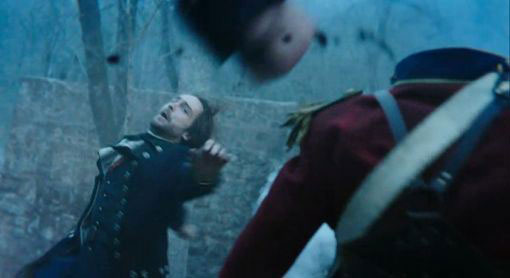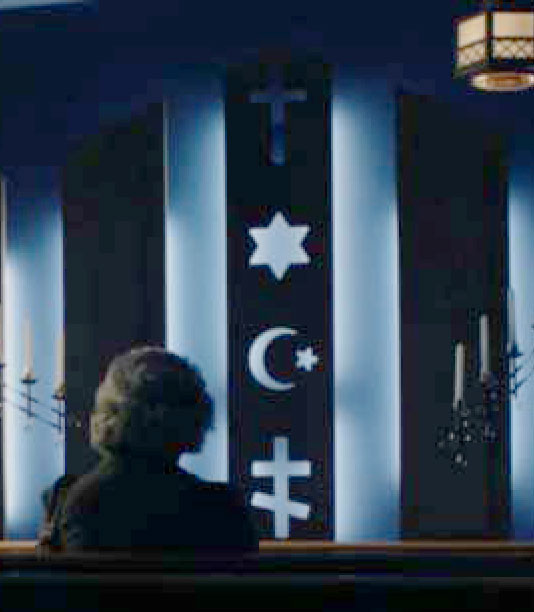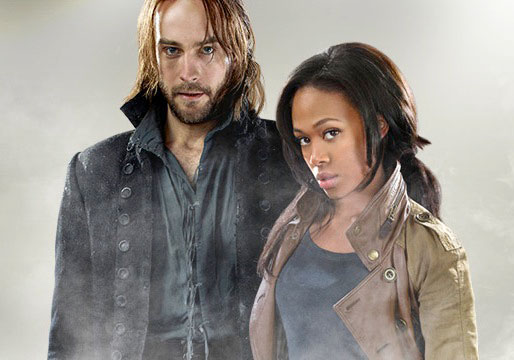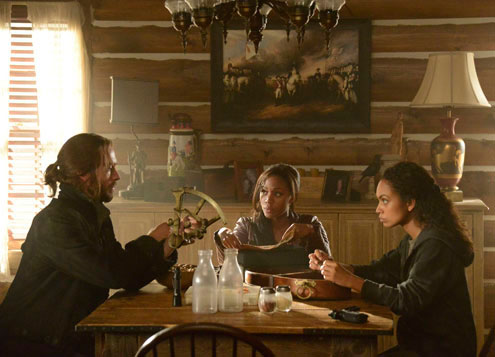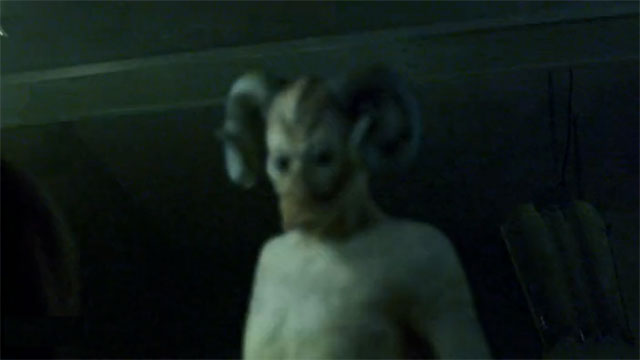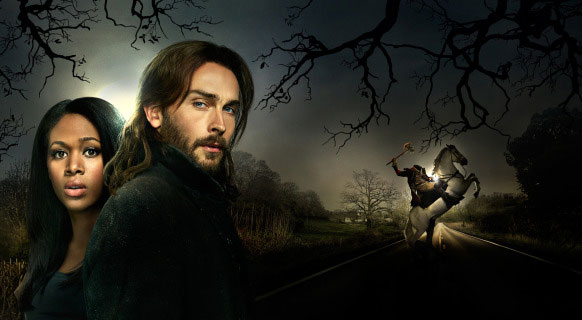A couple of years ago, for Mythcon, I wrote a paper that discussed tendencies in apocalyptic fantasy fiction (that is, fantasies that deal with ultimate conflicts of cosmic powers). The theme of the conference was “War in Heaven.” In the paper, I looked at the dichotomies that appear in Michael Moorcock’s Elric saga, in Roger Zelazny’s Amber books, and in J. Michael Straczynski’s television series Babylon 5. The point in the paper was the trend to find a pair of opposing forces that could be called something other than “good versus evil” and that seem to have equal power. For some reason “good” leads to too many religious implications that many want to avoid.
For the fall 2013 television season, a new series was launched called Sleepy Hollow. The premise was Icabod Crane, a former British soldier during the Revolutionary War awakens from a magical sleep in our modern world. He had switched sides to fight with the colonials, and had just beheaded a bizarre, seemingly impossible warrior before being cast into the sleep.
In the modern era, Crane learns that he is the destined warrior who must prevent the Four Horsemen of the Apocalypse from gaining power and destroying life as we know it. The Headless Horseman, the supernatural warrior Crane beheaded, is apparently the Figure of Death from the Book of Revelation. Crane learns that in Sleepy Hollow there were (and apparently still are) two covens: an evil one aiding the Four Horsemen and one that opposes the evil circle, trying to preserve the world.
In spite of the fact that the show has built its premise on the Book of Revelation, it otherwise avoids most direct references to Christianity. In one episode, a certain magical sequence takes place in an abandoned (protestant, apparently) church using a huge stone baptistery. Although such properties are usually sold off (hey, it’s real estate!), the story makes the implication that there are no longer believers to sustain the church.
It strikes me as bizarre to build a story premise that relies on a Scriptural mythology but avoids the very heart of that mythology. Surely the conflict of good versus evil is the most dramatic one known to the human race.
Do these storytellers avoid the explicit naming of “Good” in order not to offend believers of various faiths? They might say so, but they have already degraded the effectiveness of Christianity as a combatant in the conflict of the series. In the pilot, we saw a priest (apparently garbed in a formal Roman Catholic cassock) who is, by implication, a member of the local “not evil” coven. A minister practicing magic? Why?
There is a definite choice to avoid explicit Christianity. In one scene in the episode “John Doe,” Abbie goes to a hospital chapel. At the front of the chapel is a banner of religious symbols, but the normal Christian cross is hidden in shadow at the top of the banner.
The show focuses on the horrific nature of the “bad guy” — heads cut off, torturous treatment of living bodies, people following the hostile spirits for unspecified reasons. The supposition apparently is that people choose the “evil” side, that of the destructive Horsemen, in order to have power in whatever new world will follow the destruction of this one in the Apocalypse. It’s all surprisingly vague.
The result is that Sleepy Hollow has an undefined aspect to its central conflict. Crane has to stop the Four Horsemen from gathering their bits and pieces and getting all their power together in order to destroy the world as we know it. Crane and Lt. Abbie Mills are simply declared to be the Two Chosen Witnesses who are charged with preventing the Horsemen in reaching their goal.
Are they actually up to this job? What are their qualifications? Crane appears to be a moral and ethical man. The Lieutenant has a more ambiguous past. As a law enforcement officer, we are inclined to define her as “good.” But in the past, she has lied about things she has seen and experienced: her qualifications for this conflict are a bit more dubious.
In particular, Abbie lied about an early experience which resulted in her sister being confined in a mental institution.
How is the audience supposed to invest emotionally in this series? Supposedly, none of us are interested in seeing the world as we know it come to an end, so we would be inclined to root for Crane and his compatriots. But what then is the attraction of the opposing side? Why are the “bad guys” drawn to this power? Without having a stronger emotional hook, the episodic clashes take on more of a horror-of-the-week aspect. Our heroes have no positive goal to work toward, rather only a reactive, preventative one.
Fighting to preserve this world presumes that this one is the best possible option. But that still does not give “our heroes” a truly positive goal to fight toward. They can celebrate that they have defeated this week’s bad guy, but their only goals are preventative. They have been given no key toward a goal that would insure full out victory for them, something other than eliminating the Four Horsemen. They know (now, eight episodes in) that a demon named Moloch is the force driving the Horsemen and the “bad” coven.
But they are given no indication that there are equivalent supernatural entities supporting their side that they can access. Apparently, the supernatural realm is almost entirely ruled by evil.
This goes back to the theme of that Mythcon paper I had written. Apocalyptic fantasy usually embodies supernatural forces that are split into two equal sides. The usual non-“religious” choice is to designate the forces as Order versus Chaos, with Order being the preferred (ie, “good”) side. But if the forces are equal, then why is one preferred over the other? Why choose one side like Order over the other? The problem for our human nature is that we do not actually believe that “good” and “evil” are equal.
We do believe in an absolute Good, no matter how it is defined, and thus that things like flat-out murder are wrong. We do choose sides and believe that Evil, although powerful, is not in the final end, greater than Good.
Where that leaves the series, I’m not sure. From a strictly psychological standpoint, our main characters will quickly fall into battle fatigue, because there is apparently no relief available to them. Their resources are inadequate. The show is fortunate in having a very appealing cast to carry this awkwardly designed conflict.
They have been renewed for a second season. But the storytellers will need to start deciding what “the end of the world as we know it” will look like, because that is a very vague emotional stake. What it would mean to the individual, other than death (which though not desirable might be an escape from the conflict), is not clear and it needs to be.
But… the show does give us a nicely produced story and the characters satisfy.

